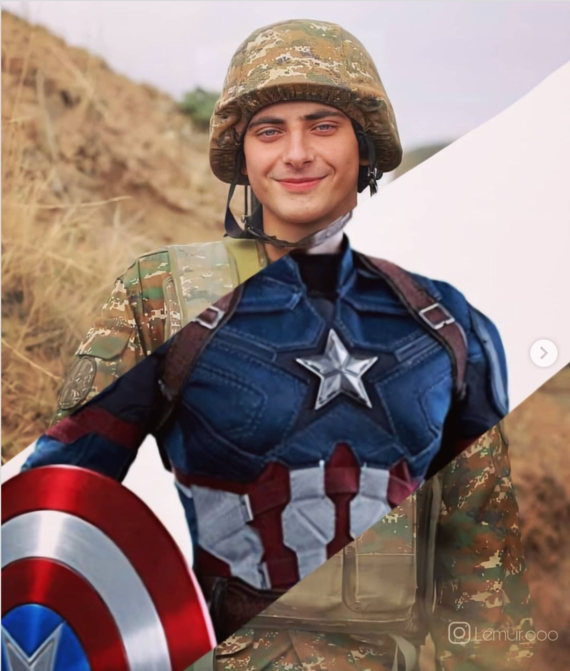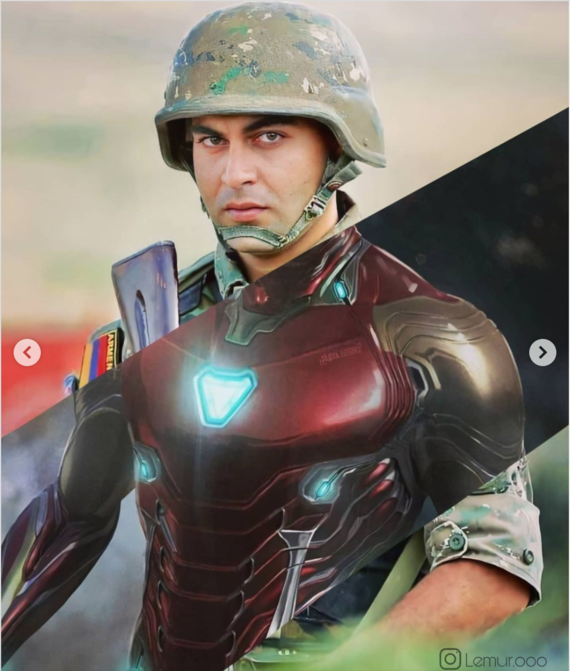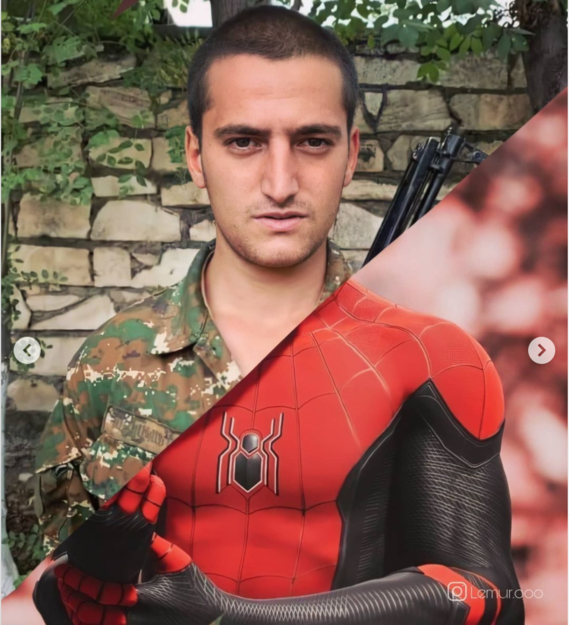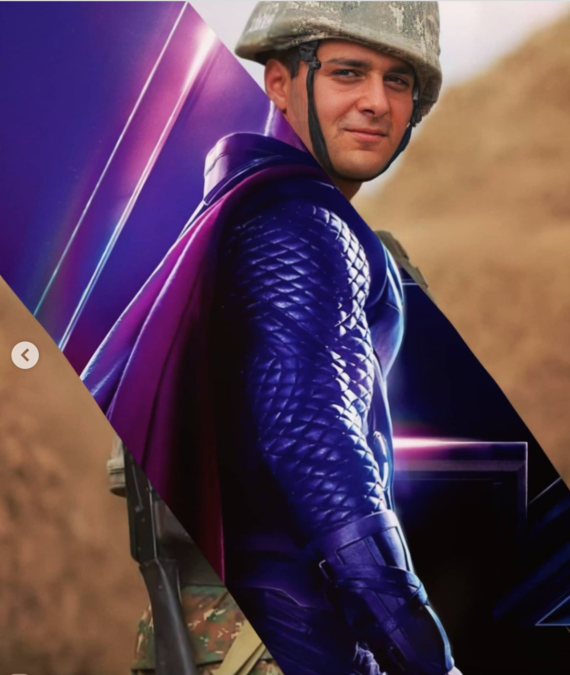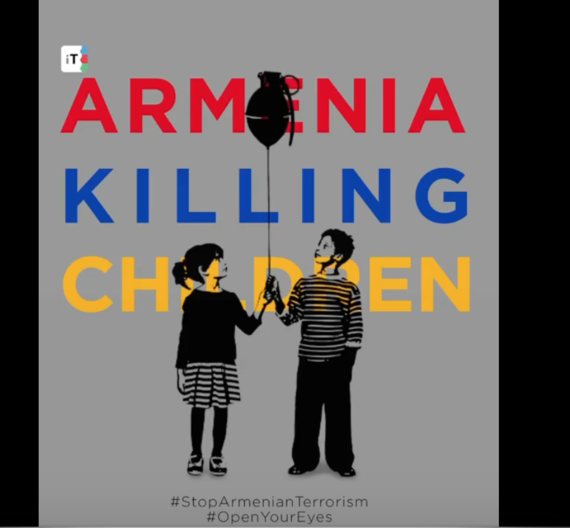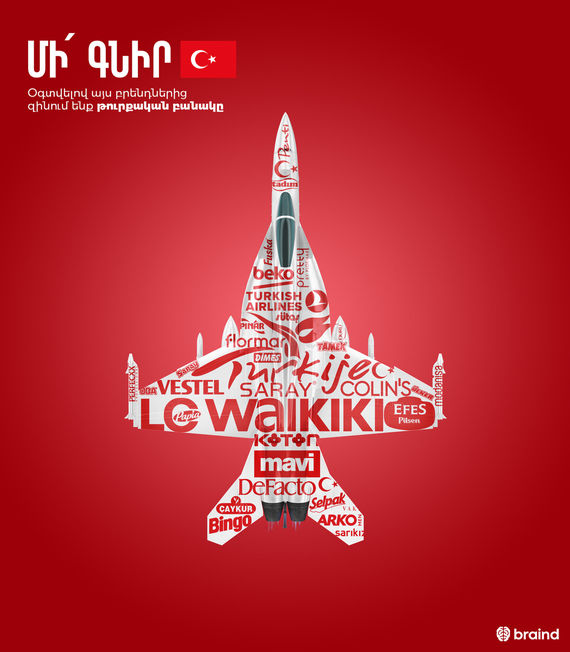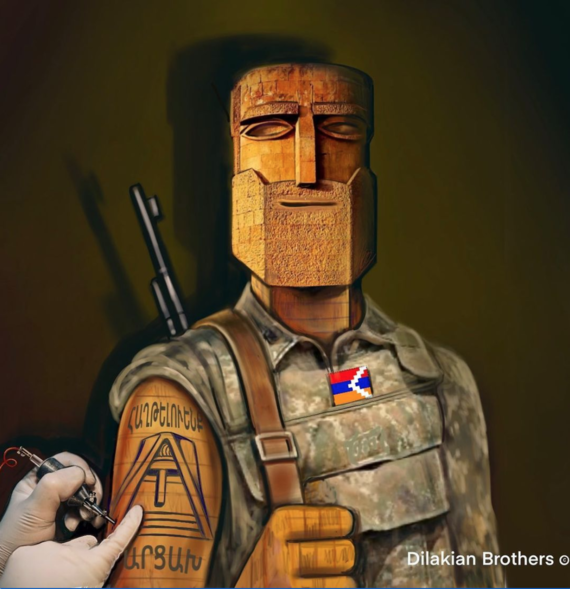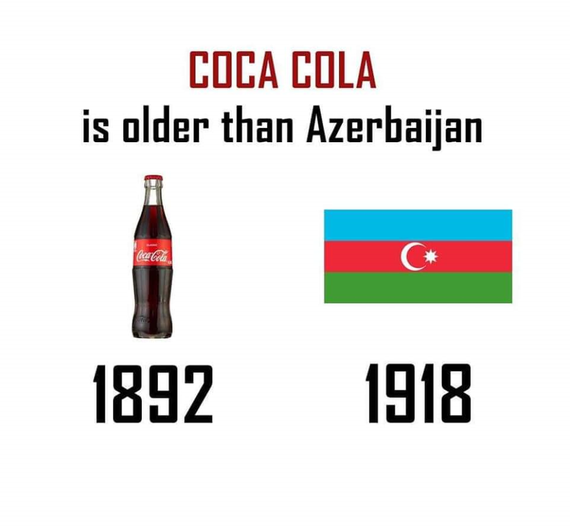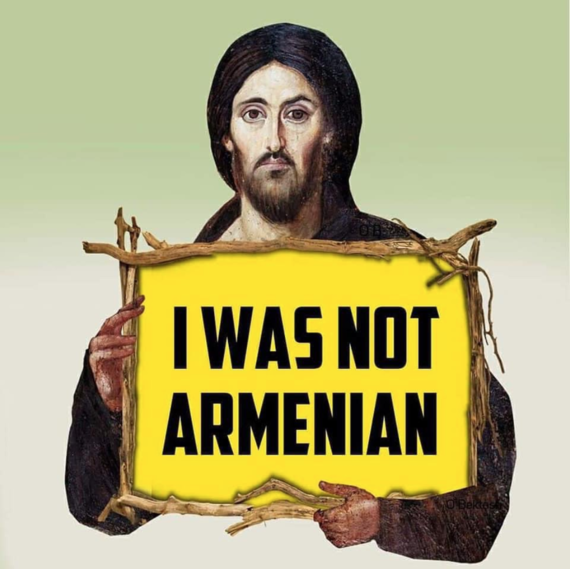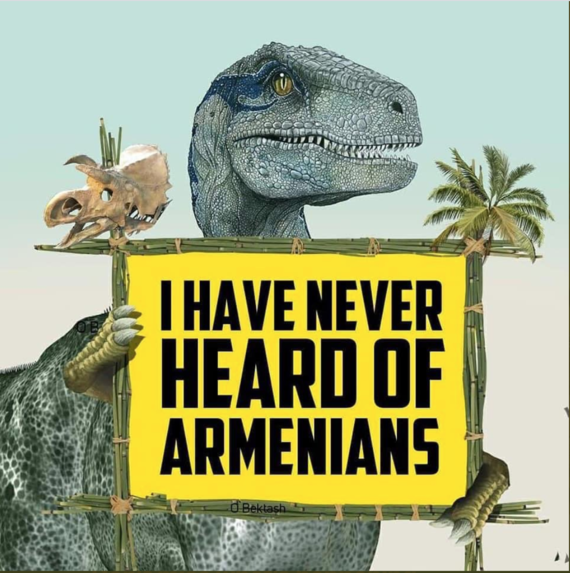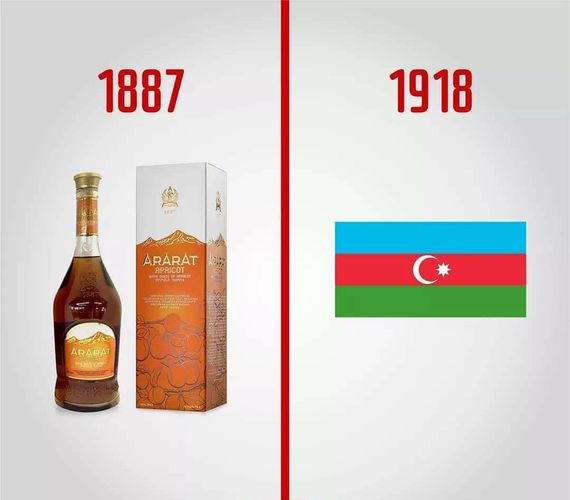Thu Dec 10 2020 · 6 min read
Duplicating Images: Azerbaijan’s Mirror Propaganda Operation Part II

By Arshaluys Barseghyan
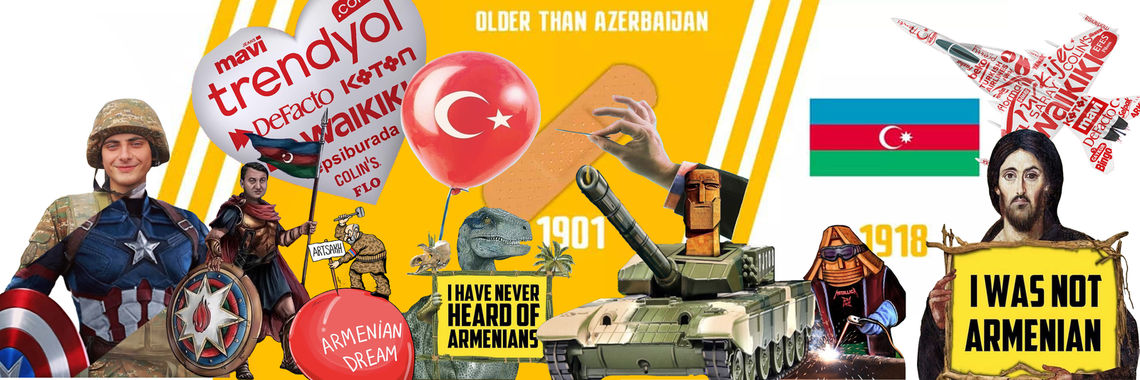
Wars are memorialized also through images. It is through documentary footage and photographs that the First Artsakh War is imprinted in our minds: the rallies that preceded that war, the earthquake and the post-war economic crisis. It is through images that we will also remember the 2020 Artsakh War.
Other than documentation, images can also play another role: they become weapons in virtual battles. This visual language became more potent as the virtual war gained momentum.
Right from the start on September 27, parallel to or as part of its mirroring propaganda operation (covered in a previous article), that was intended to cloud the information landscape, Azerbaijan systematically mirrored the Armenian side’s visuals. Sometimes, this came in the form of a response; at other times, it was outright plagiarism.
Here is a selection of examples of visual mirror propaganda, with the originals shown next to their copies, in chronological order.
Mirror 1: The Artilleryman Engulfed in Flames
One of the iconic images of the 2020 Artsakh War was a photograph of conscript Albert Hovhannisyan against the background of artillery fire, with a burnt and dusty face. This one image was worth a thousand words.
The image was published on the official Facebook Page of Armenia’s Defense Ministry on September 29, the third day of the war.
Azerbaijan’s Mirror Propaganda Operation
By Arshaluys Barseghyan
During the Artsakh War, Azerbaijan used mirroring propaganda to try and keep the two sides on equal moral terms, creating an information fog until international journalists began arriving to the conflict zone.
Mirror 2: Territories as Women
On September 30, Kai Harutyunyan uploaded an illustration called “The Queens” to his Twitter account. It depicted a joint map of Armenia and Artsakh, where each was a queen. Similar illustrations depicting women have been in circulation since the first day of the war.
In Azerbaijan, an illustrator decided to copy this with Khojaly on Instagram. A day before the war started, on September 26, an illustration had been posted to Instagram in the figure of a woman, with two symbols of Shushi. It was widely disseminated later during the days of the war.
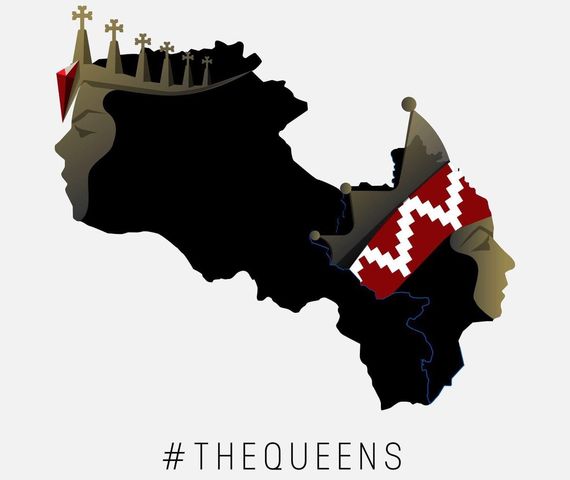
Mirror 3. The Superhero Soldier
On October 4, Lemur.ooo, a visual art page published a series of images depicting Armenian soldiers as superheroes.
The idea was picked up by Azerbaijan in mid-October. It went as far as depicting Hikmet Hajiyev, Assistant to the President of the Republic of Azerbaijan, as a gladiator.
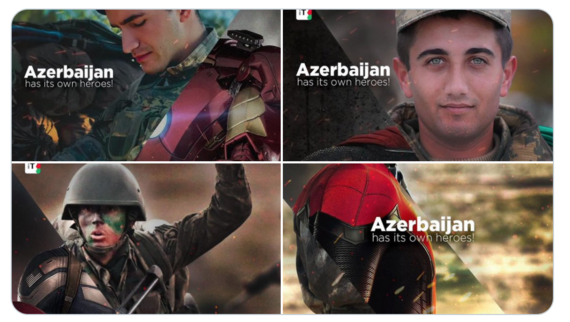
Mirror 4: Music Among the Ruins
As we had mentioned in Part 1, four days after the shelling of the Holy Savior Ghazanchetsots Cathedral of Shushi, a video of cellist Sevak Avanesian playing “Crane” by Komitas inside the partially-destroyed cathedral was released.
A mirror replication was then made of a musician performing in front of a backdrop of Ganja, Azerbaijan’s second largest city, which had been shelled by the Armenian side. It turned out that the young man in the video is not even playing the instrument. It was a clip made by an advertising agency.
A second attempt by Azerbaijan was more successful. This time in Fizuli at the end of autumn, on November 24, a violinist is playing Concerto No. 1 “Spring” from Vivaldi’s Four Seasons.
Mirror 5: The Balloon as a Symbol of War
Starting on October 10, Armenians across social media started spreading the word about the #redballoonchallenge. This was a response to Turkey’s involvement in the war.
The red balloon symbolized Turkish aggression, the threat of terrorism, the lie and the danger they pose for the entire world. Participants of the challenge would pop the red balloon and challenge someone else to do the same.
Azerbaijan did not initiate a similar challenge for lack of relevant symbolism. Also, since the start of the war, the internet connection in the country was very slow and many of the social media sites were banned. Instead, as soon as the red balloon challenge was launched, Azerbaijani accounts started disseminating images depicting a balloon but with a different symbolism.
On October 18, an Azerbaijani caricature appeared where the red balloon that is about to pop represented the Armenian dream. In another animated sketch, a balloon that is held by a girl and a boy is actually a grenade that explodes killing the children.
Other than mirroring, much war-related visual output was answered in kind with other visuals.
Answer 1: Don’t Buy Turkish Products
As more proof of Turkey’s involvement in the war was unfolding, Armenia decided to ban the import of Turkish products, and a campaign to boycott Turkish products was launched.
On October 1, the Braind marketing agency published a poster where a list of Turkish brand names made up the silhouette of a rocket. The tagline was “By buying these brands, you are equipping the Turkish army, which is killing civilians.” This became a series and was translated into English.
Azerbaijan’s answer came a day later. The same red background and brand names but this time in the form of a heart. They even kept the tagline almost intact: “By buying these brands, you are supporting our Turkish brothers.”
Another illustration from the same company was also imitated, entitled “Terrorism has a new face.”
Azerbaijan did also start its own boycott, targeting Johnson & Johnson products because they had announced “fundraising initiatives to support those impacted by the current conflict in Armenia and Azerbaijan” and used the word Artsakh. The company backtracked to say they would provide assistance to both sides.
Answer 2: The “We Are Our Mountains” Monument
Since the beginning of the war, the figures depicted on the monument in Artsakh called “We Are Our Mountains” [Tatik/Papik] became characters narrating episodes of the war. The grandpa goes off to war in a tank, the grandma knits socks in the colors of the Armenian flag, they watch the news together, bake bread and clean up Stepanakert after the shelling. The Illustrations were by the Dilakian brothers.
After almost 20 days, Azerbaijan reacted in the form of an animated clip with the message, “Nothing is as it seems.” Grandma and grandpa were holding guns and had bloody hands.
Answer 3: … Is Older than Azerbaijan
Another campaign that spread during the war was “ … is older than Azerbaijan.” The campaign dated back to 2016, after the Four Day War, but was restarted. It was a response by Armenians to Azerbaijani allegations that Artsakh was historically Azerbaijani.
As had happened in 2016, the Armenian side was publishing a list of things that were in existence before Azerbaijan became a country. The examples are a shoe found in the Areni region in Armenia, Coca Cola, Ararat Cognac and even the bandaid.
The campaign that began to spread at the end of September received an answer at the end of October through a dinosaur saying it has never heard of Armenians, or Caesar and Jesus Christ denying being Armenian.
Answer 4: Hashtag Wars
The online wars also used hashtags to battle on Twitter. Some were identical mirror reflections: #StopAzerbaijaniAggression/ #StopArmenianAggression․
An interesting twist took place by Azerbaijani users around October 6-7 when the hashtag #DontBelieveArmenia began trending. The hashtag was used with anything anti-Armenian and with Azerbaijani propaganda materials.
In response to Azerbaijan's calls to “not believe Armenia,” on the same day, a new Armenian hashtag #FactsAboutAzerbaijan began trending.
Azerbaijan’s hashtag came to the attention of Benjamin Strich, an open source investigator who pointed out that the “Majority of the accounts that have been spamming the #DontBelieveArmenia tag were created on October 4, 5 and 6.”
Answer 5: License Plates
In the village of Vank, Artsakh, there is a long wall displaying USSR license plates belonging to Azerbaijani residents. During a victory parade in Baku on December 10, Armenian military license plates were affixed to a large transport truck saying Karabakh is Azerbaijan.
* * *
And an additional mirror narrative about who used white phosphorus:
On October 30, footage of the burning forests of Artsakh appeared online. On the same day, the Government Ombudsman of Armenia Arman Tatoyan stated that Azerbaijan had used weapons with chemical elements to target forests adjacent to civilian settlements. Then, the Artsakh Defense Army published the footage of the use of the weapons.
The next day, official Baku first described the accusations as unfounded, then said it was fake news, intended to justify Armenia’s own use of phosphorus munitions.
On November 2, Assistant to the President of the Republic of Azerbaijan Hikmet Hajiyev, who had become a primary source of disinformation, in a post-factum announcement said, “On October 8, Armenia fired phosphorus projectiles to the Fuzuli region of Azerbaijan. It did not explode on impact zone. ANAMA experts have identified it and decommissioned. By use of phosphorus Armenia sets fire in Shusha forests to cover cameras of drones with white smoke.”
As a follow up, on November 6, Azerbaijan announced that they had found the phosphorus-munition in Terter, “The Azerbaijan National Agency for Mine Action (ANAMA) have located and neutralized the explosive devices on the ground.” Azerbaijani social media turned this into an environmental campaign about how the Armenian side was destroying the environment (see examples one, two and three.)
On November 13, DFRLab, an open source investigative outlet, confirmed Azerbaijan’s use of white phosphorus.


